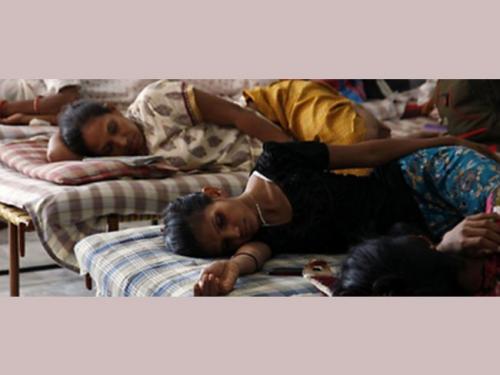Le scandale des mères porteuses, ou l’indigne exploitation des femmes les plus pauvres en Inde !
 3.000 cliniques se livrent à ce “service”, cela représente une industrie de 2,3 milliards de dollars par an. Environ 10.000 couples étrangers visitent l’Inde pour avoir accès à ces services.Les “mères porteuses” sont traitées comme des prisonnières ou plutôt des bêtes domestiques.
Birthing a Market, A Study on Commercial Surrogacy (2012) estimates that there are currently 3000 clinics in India offering surrogacy services. Surrogacy is a 2.3 billion dollar industry annually. Around 10,000 foreign couples visit India for reproductive services each year.
Dr Nayna Patel, a frontrunner of the Indian surrogacy movement, heads the Akanksha Infertility Clinic in Gujarat, where more than 600 surrogate babies have been born. Not only does Patel see the industry growing, she is gearing up for it and is building what is being dubbed as the world's first multi-million dollar 'baby factory' in Anand, Gujarat, which will be a one-stop-destination for surrogacy. Patel predicts a 12 percent growth in the sector per year.
Whilst the rich Westerners buying surrogacy services often see the 'service' as a human right, many would argue that using poor, brown women as incubators is racist, colonialist, and akin to prostitution.
This reproductive tourism is usually viewed as unproblematic, and almost an act of kindness on behalf of the commissioning parents, because, it is argued, the women who carry the babies have no other way to earn a living.
But in Gujarat, and other poor, rural parts of India, parents of multiple daughters sometimes sell the older ones to trafficking gangs and pimps, who take them to cities to work as surrogates and earn money for their younger sisters’ dowries. Surrogates in India are usually paid under $8,000.
Once working as surrogates, women can be kept in cramped quarters and told when to eat, drink, and sleep. Monitored like prisoners, they may be required to refrain from sex and riding bicycles. Surrogates can also be prevented from using painkillers, even for conditions such as migraine, or required to take medicines like Lupron, estrogen, and progesterone to help achieve pregnancy, all of which can have damaging side effects.
During the ‘pimping of pregnancy’ project I would visit several countries that are known as hot spots in the rent a womb business, such as India, Thailand, and Mexico.
Countries such as France, Germany, Italy, Spain, Portugal and Bulgaria prohibit all forms of surrogacy. In countries including the UK, Ireland, Denmark and Belgium, surrogacy is allowed where the surrogate mother is not paid, or only paid for reasonable expenses. Paying the mother a fee is prohibited.
Commercial surrogacy is legal in some US states, for example, California, and countries including India, Russia and Ukraine.
In these countries, with vastly different legal systems, I would meet the commissioning parents; brokers; clinicians; surrogate women; and those campaigning to end the commercial trade in wombs. I would ask the question, is outsourcing reproduction another form of bonded labour, and is it widening the gap between rich and poor, the global north and south. Would commercial surrogacy exist at all if it were not for the increasing acceptance of the financial exploitation of the female body ?
I would also look at the boom in the sale of breast milk. In the US, new mothers with professional careers are offered work-based ‘lactation rooms’ as incentives to return to work as soon as possible after giving birth. They can make on-line bookings for the purpose-designed pumping chairs in these rooms, where they can ‘comfortably’ plug in and express milk during a work-break. Lactation rooms are coveted as a sign of a caring workplace, with the newly developed ‘Corporate Lactation Policies’ of companies like Goldman Sachs becoming an accepted substitute for maternity leave.
Very poor women are being pimped and coerced into selling their milk, and there are even instances where the women are impregnated in order to produce the milk for sale. I would be looking at how ethical the companies that broker the sales, such as Prolacta, and whether it is aware of the exploitation behind the commercialisation of this product. I would talk to those who buy and sell, and look at the diverse stories behind this new and insidious form of wet nursing.
Please help me raise enough funds to do this research. I would bring you the very best in evidence, and will work hard to access interviews with those involved, in whichever way, in this market. I want to live in a world where it is unacceptable to put a price on a baby, or consider the inside of a woman’s body a saleable entity.
By Julie Bindel - London - 08 Feb. 2016
|

